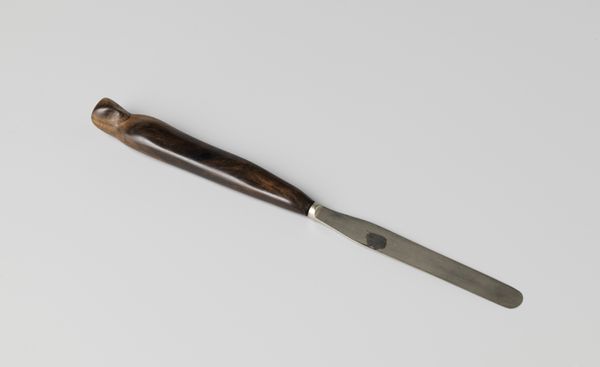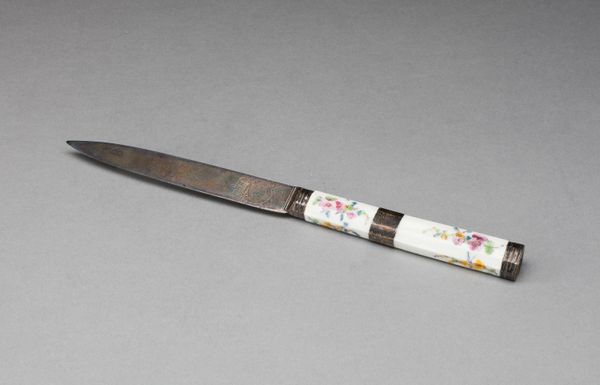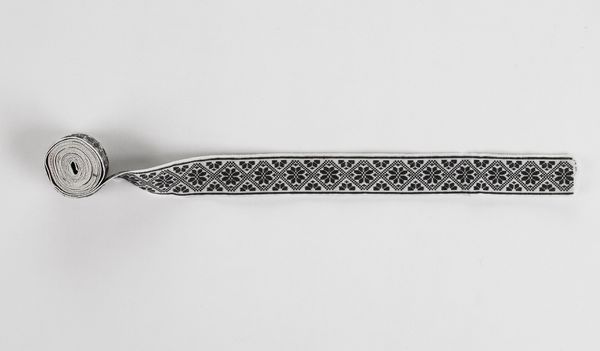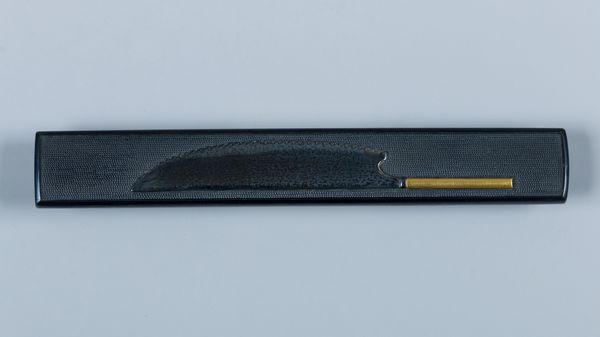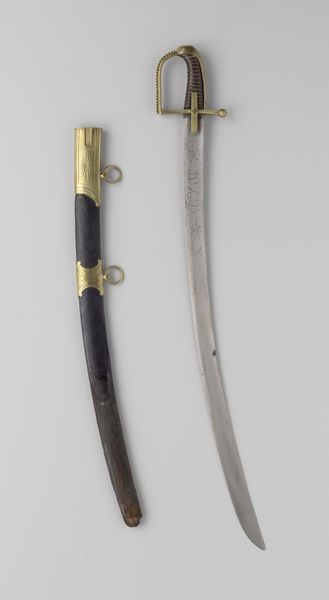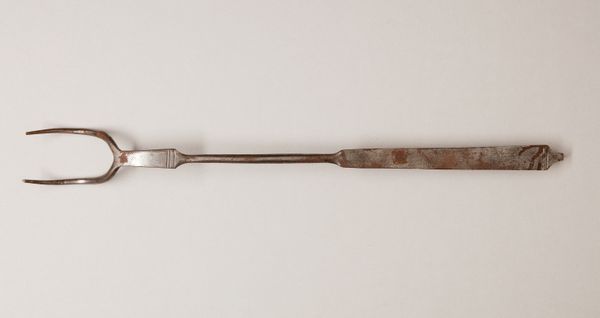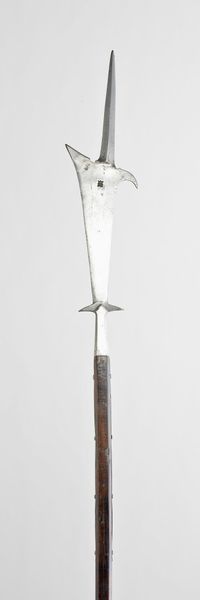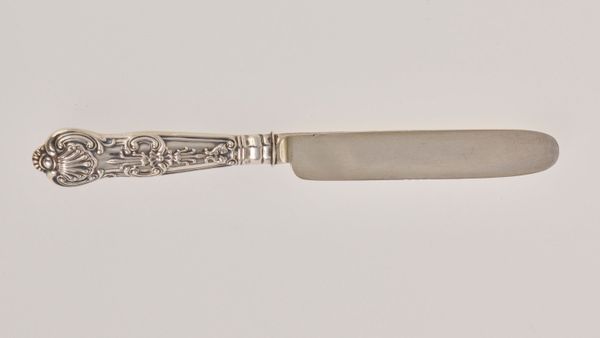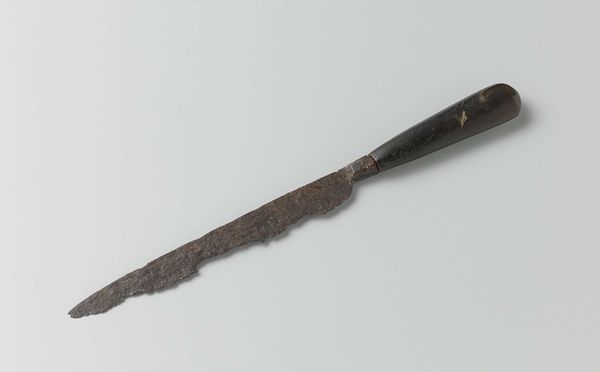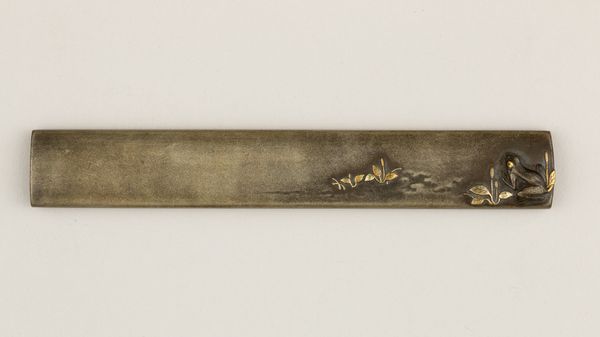
富嶽雲烟図小柄 Knife Handle (<i>Kozuka</i>) with Blade 19th century
0:00
0:00
drawing, metal, wood
#
portrait
#
drawing
#
metal
#
asian-art
#
japan
#
mountain
#
wood
#
sword
#
calligraphy
Dimensions: L. including blade 8 5/8 in. (21.9 cm); L. excluding blade 3 13/16 in. (9.7 cm); W. 9/16 in. (1.4 cm); thickness 3/16 in. (0.5 cm); Wt. 1.7 oz. (48.2 g)
Copyright: Public Domain
Curator: This is a nineteenth-century Kozuka, or knife handle, with a blade, located here at The Met. The piece is entitled "Mount Fuji in Clouds and Smoke," and is by Ranzan Tsuneyuki. Editor: It’s beautiful. The metalwork is exquisite, especially the contrast of the blade against the black handle. I find myself drawn to the mountain illustration depicted in miniature. Curator: Consider the metal and wood—materials readily available in 19th-century Japan. Think of the artisan who painstakingly crafted this small object, not merely as decoration but as part of a functional tool. Was it for a samurai, a merchant? The object speaks of access to particular material and artistic resources during that time. Editor: The meticulous detail, the elegant curve of the blade – these are the hallmarks of artistry regardless of utility. And the mountain depicted there, such clean and graceful lines in its illustration… It has a sort of minimalist grandeur. The kanji etched onto the blade and on the handle offer further intricacy. Curator: Exactly, and the blade’s markings! That could suggest not just regional origins of its crafting, but the literacy rate and calligraphic traditions. How does this knife handle participate in the larger societal consumption of art objects, and of landscape as aesthetic object? Editor: Perhaps the goal isn’t functionality so much as elevating a practical item to a work of art? The black lacquer contrasted with golden adornments certainly lends that air. There is such considered use of space to suggest depth of field; mountain to cloud… such delicacy! Curator: I would contend that considering function and cultural symbolism is crucial, not merely visual aesthetics, here. These details are indicative of larger processes of production and consumption during the Edo Period, wouldn't you agree? Editor: Undoubtedly, yet those considerations serve to deepen appreciation for the object's aesthetic form. To understand its context makes it all the more complete a picture to examine. Curator: I find I agree with you there! What a wonderfully complex artifact, so small, yet echoing so much. Editor: Precisely, an item commanding reflection from a place we might least expect it.
Comments
No comments
Be the first to comment and join the conversation on the ultimate creative platform.

